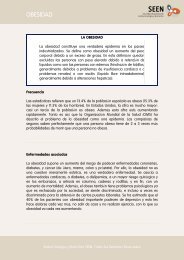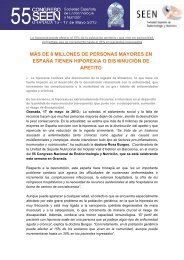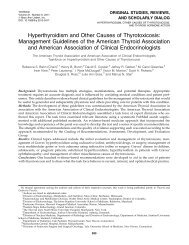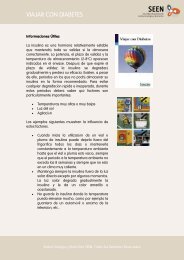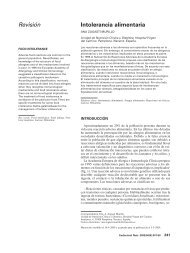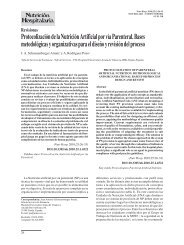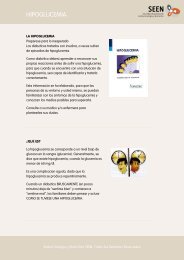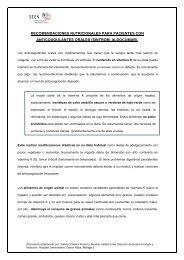Basic Concepts of Fluid and Electrolyte Therapy
Basic Concepts of Fluid and Electrolyte Therapy
Basic Concepts of Fluid and Electrolyte Therapy
You also want an ePaper? Increase the reach of your titles
YUMPU automatically turns print PDFs into web optimized ePapers that Google loves.
Figure 5: Example <strong>of</strong> a vital signs chart showing a rising pulse rate <strong>and</strong> a falling<br />
blood pressure, indicating progressive intravascular hypovolaemia secondary<br />
to haemorrhage.<br />
Examination <strong>of</strong> the jugular filling with the patient reclining at 45°<br />
should be routine. If the level is elevated above the clavicle, this may<br />
signify intravascular over-expansion by administered fluids, congestive<br />
heart failure, or both. If, however, no jugular filling is observed,<br />
then lower the patient slowly until filling is observed. If filling is still<br />
not seen or only seen with the patient nearly horizontal, then this may<br />
signify an intravascular volume deficit.<br />
This manoeuvre is particularly valuable in assessing patients still<br />
receiving intravenous fluids some days after the acute phase <strong>of</strong> their<br />
illness has subsided <strong>and</strong> recovery is slow or accompanied by complications.<br />
Such patients may have an exp<strong>and</strong>ed extracellular fluid (ECF)<br />
with oedema due to excess crystalloid administration, but a diminished<br />
blood or plasma volume due to continuing leak <strong>of</strong> blood, protein<br />
or serous fluid into wounds or inflamed areas. These findings indicate<br />
32




